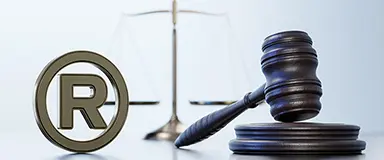When it comes to trademarking a logo, setting a specific color as part of that trademark might cause issues if you go international later. Here’s what you need to know.
Similar Trademarks – Are They Worth It?

One of the more interesting issues you may run into with trademarks is one of similarity. The issue can go one of two ways. Either you’re trying to register something only to find out that somebody else already holds a trademark for a thing that’s very similar to the one you want to trademark. Or, you already have a trademark and you discover somebody else either has one or is applying for one for something that’s a little too close for comfort.
Either way, similarities in trademarks can cause problems. Let’s explore why and whether it’s worth running the risk of having similar trademarks.
What Is Trademark Similarity?
Trademarks are considered “similar” to one another if they look or sound almost the same to the point where it might be difficult to tell them apart. For instance, let’s say somebody wants to trademark the brand “Googel.” Not only is the spelling similar to the existing “Google,” but the intended trademark reads exactly the same phonetically.
This is an obvious example of similarity.
However, there are others, though they’re applied differently depending on the country. For instance, the U.S. can deem two trademarks similar if they are the same word only in a different language. “Black” and “Noir” as two different trademarks might trigger some concerns. Some countries also rule that trademarks can’t be similar in intent, even if they don’t sound the same. Take “Man About Town” and “Guy About Town.” “Guy” and “Man” are very different-sounding terms, so there’s little chance of confusion there. However, the intent between the marks may be the same, especially if the two brands offer similar services, such as clothing. Thus, you have a similarity.
Why Is This Similarity a Problem?
Let’s say you hypothetically own the “Google” trademark. It’s pretty clear at this point that “Googel” is trying to piggyback off your established brand’s market penetration, with that clarity coming into further focus if the registrant tries to offer a similar product. Consumer confusion can be the result – people may go to “Googel” rather than “Google” because they don’t realize there’s a difference between the two.
As a registrant, you can also face challenges in many countries if you try to go down this similarity route. In the U.S., for instance, it’s common for trademark applications to get rejected if the intended trademark is too similar in sound or look to a trademark that already exists. So, your application may not even get off the ground, costing you money. And even if you do manage to eke the application through, the owner of the similar trademark may believe they have grounds to challenge your trademark. Again, costs come into play. You may end up having to go to court and have your trademark rescinded, putting you back at square one in your branding efforts.
Can You Get Around the Similarity Issue?
Yes…to an extent.
Some countries may allow similar-sounding trademarks if each mark is for a completely different product. With our “Google” versus “Googel” example, you might have that difference if the “Googel” mark is for a gooey gel-like product intended for kids, for instance. It’s impossible to confuse that product with Google’s search engines and product suits, so there’s a chance the trademark might pass the application process.
However, even that difference may not be enough. Plus, from your branding perspective, it may not be a good idea to have a trademark so similar to one that’s already established. A lot of people who land on your “Googel” website may have been looking for Google and will bounce away immediately. You could even risk creating consumer frustration with this approach, making your trademark perhaps less valuable than you hoped it would be.
Is It Worth Applying for a Similar Trademark?
Just because something might be doable, that doesn’t mean it’s worth doing. That mantra usually applies to similar trademarks for the branding reasons we touched on earlier. Think about it like this – a brand is something that’s meant to be unique to your business. Having a similar trademark (even one that passes the application process) chips away at that uniqueness and associates you with a brand with which you have nothing to do.
Our advice is to avoid similarity wherever possible. Use pre-application checks – with the help of a trademark registration service – to find a mark you can unmistakably link to your business. Your application will have more chance of succeeding and you avoid the branding issue with this approach.
By Emily Brooks


